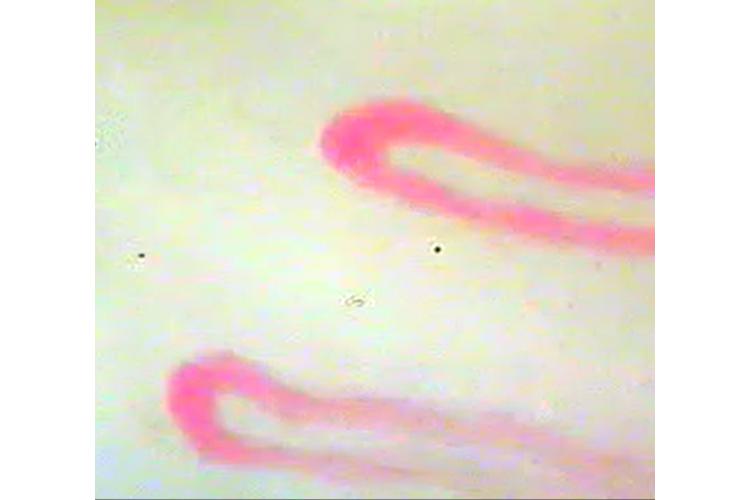- Share
- Share on Facebook
- Share on X
- Share on LinkedIn
Thesis defence
On December 17, 2024

Min Jin (ECCEL)
Blood is a complex fluid that circulates through the cardiovascular system, crucial for transporting nutrients and oxygen while removing metabolic waste from cells. Blood consists of approximately 55% plasma and 45% blood cells, including red blood cells (RBCs), white blood cells (WBCs), and platelets. Each component is responsible for different and critical functions, such as plasma delivering various substances and RBCs carrying oxygen.
RBCs, the most abundant blood cells, significantly affect blood flow through deformability and aggregability, contributing to blood rheology complexity. Under healthy conditions, RBC tends to aggregate linearly and reversibly at low shear rates. However, in pathologies such as diabetes and pancreatitis, abnormal RBC aggregates form even at high shear rates, influenced by factors like plasma proteins (e.g., fibrinogen) and RBC properties. RBC membrane surface is covered by glycolipids and glycoproteins, called glycocalyx. It has been reported that RBC glycocalyx alternation and increased aggregation are found in many diseases, leading to occlusion formation.
This glycocalyx layer is also present on endothelial cells (ECs) in blood vessels, where it performs similar protective and regulatory functions, mediating intercellular recognition and adhesion. In normal physiology, the negative charge of the glycocalyx helps prevent RBC-EC adhesion. This reversible adhesion disappears when the shear rate is high, however, enhanced and increased adhesion can be found in many critical illnesses with losing glycocalyx, including sepsis, COVID-19, and diabetes. Hence, comprehending the basic mechanisms of RBC aggregation and RBC-EC adhesion is essential not only for basic purposes but also for possibly establishing its implication in diseases.
In this work, the RBC aggregation and RBC-EC adhesion were investigated by microfluidic techniques. The RBC aggregation behavior was first analyzed under three mimic pathological or pathological conditions: glycocalyx alteration induced by pancreatic α-amylase, neuraminidase from Clostridium perfringens and diabetes. The performed experiments revealed the essential role of RBC glycocalyx in RBC aggregation, which has to be considered in future studies. We observed that cleavage of the RBC glycocalyx by amylase or neuraminidase significantly affects the size, probability of appearance, morphology, and stability of RBC aggregates. These changes are likely to cause vascular complications, particularly in disorders characterized by elevated amylase or neuraminidase activity or reduced sialic acid residues. In addition to the glycocalyx alteration study, systematic comparisons between healthy and diabetic blood were analyzed to find the potential factors for abnormal aggregation besides fibrinogen alone in the diabetic patient's plasma. Our results indicated that not only other plasma elements (e.g. immunoglobulin) should play a key role but also RBCs structure play a role in abnormal aggregates formation. Another focus was RBC-EC adhesion. This preliminary study analyzed the role of glycocalyx alteration by using amylase and neuraminidase. The results showed an increased adhesion between RBCs and ECs with enzymatic treatment, which may impede microcirculation and lead to vascular complications.
In conclusion, we established microfluidic systems for studying RBC aggregation and RBC-EC adhesion in vitro, which was appropriate for evaluating aggregation and adhesion behaviors. Our work provided insights into the glycocalyx role and the potential role of diabetic plasma and RBC in aggregation and adhesion. These findings may contribute to elucidating the formation of occlusion due to RBC aggregation or RBC-EC adhesion with glycocalyx cleavage, such as in diabetes.
Date
14:00
Localisation
LIPhy, salle de conférence
- Share
- Share on Facebook
- Share on X
- Share on LinkedIn